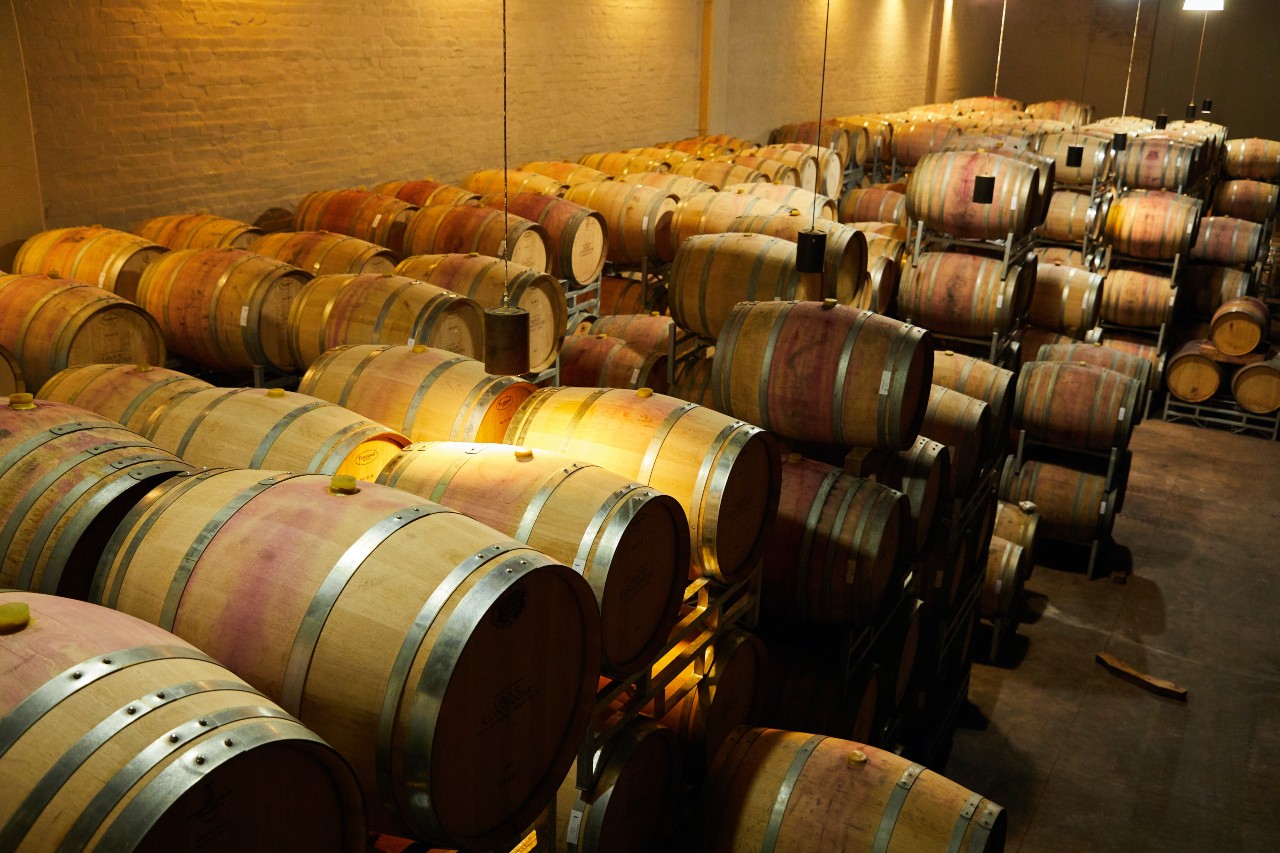The importance of food in the tourist sector lies in the fact that after any trip food is one of the factors that is most remembered even when one has seen and enjoyed spectacular scenery or impressive monuments; definitively in many cases the place will for ever be remembered for what one ate, including not only the quality of the food and drink but also the hygiene, the service and the atmosphere; the sum of all these factors is what makes the travel experience both pleasant and unforgettable.
In the Middle Ages we see the trends being set by the consumption of the monarchs and the nobles at court who had a strong influence from a culinary point of view, given that the population wanted to imitate them. In XIII century Europe they began to elaborate the first gastronomic guides, which were a simple record of the best inns and restaurants. These guides were written by famous “gourmets” those who today we would refer to as “foodies”, people who loved food and devoted themselves to classifying restaurants.
The most famous was “Curnonsky” in Amberes, dedicated exclusively to French cuisine. The great Curnonsky (originally Maurice Edmond Sailland) was named the “prince of the gastronomes”. In 1927 he devoted himself to travelling around different areas of France with a group of friends and fellow gastronomic enthusiasts.
Now in the world there are a limitless number of gastronomic routes dedicated to many varied cuisines. The choice of culinary themes will emphasize the identity of the route, promote both rural tourism and the sale of food products. Thus helping to develop the local economy and promote the culture and identity of a region.
At Sabores, Olores y Colores (Tastes, Scents and Colours), we believe that this is the path we should follow in order to revive Spanish tourism; few countries can beat us in variety and quality of products no?
One of the objects of this type of tourism is not merely to visit, but also to be surprised by new flavours and/or the culinary offerings of a particular region. To offer those gastronomic specialities that are prepared on particular dates or occasions coinciding with traditional or cultural festivals of local and/or national importance or simply because they are in season. It’s also interesting to learn about the ingredients and more so that the tourists themselves can learn to prepare the dishes and be surprised through the discovery of new sensations and culinary experiences. Gastronomic tourism represents a new option for venturing into the world of flavours, aimed not only at people already knowledgeable about the art of eating well (chefs or gourmets) but also at all those people ready to experience new culinary adventures.
Amongst the activities envisioned in this sector are visits to restaurants where traditional dishes are served, visits to markets and food stores, the possibility of watching and even cooking in the houses of the locals and to participate in local festivals where food is one of the great protagonists.. As I have already commented, it is clear that this tourist sector combines perfectly with other activities which form part of rural tourism. For example in Spain we usually refer to the XII century Codex Calixtinus as being the first guide to the cuisine of Navarre. The gastronomy scholar Víctor Manuel Sarobe Pueyo studied a manuscript from a convent dating from the XVIII century written under the pseudonym Antonio Salsete.

But let us comprehend a little better the path travelled by Spanish cuisine until arriving at the modern cuisine of the XXI century peppered with Michelin stars.
The history of Spanish cuisine, narrated as a whole, was not treated as such, until the middle of the XXI century. We could say that Spanish cuisine remained hidden and ignored in European culinary literature until the romantic travellers who traversed Spanish territory began to describe it to their readers in neighbouring countries. Few details are known about Spanish cuisine before the X century and the documentary references (generally literary) frequently mention ingredients and names of dishes but nothing about the culinary process. However the Spanish culinary evolution from the Middle Ages describes a trajectory which has passed through several phrases before becoming what we know today. The arrival of new ways of cooking from the Arabs and Sephardic Jews, the cultivation of new spices. The progressive introduction of culinary ingredients from the New World and the influences of European cuisine. All of these helped to create a culinary personality which would influenced French cuisine of the early XVII century. In turn it was later influenced in the XVIII century by Italian and French cuisines which were popularized at court. The period from the XV century until the beginning of the XIX century is the moment in which the principal eating habits of the majority of the European countries are set, which are given the name of traditional cuisine.
At the end of the XIX century, certain journalists and writers began to write, to compile and to create a previously uncharted identity. It has come to be known as the gastronomic generation of 27. Spanish cuisine is already considered by them to be a mix of the culinary traditions of the peoples who populated the territory through time. History shows how the culinary concept evolves until it acquires its own personality drawn from its prized diversity. That said it’s true that this classic cuisine has deep religious roots. It’s from the XX century when Spanish cuisine becomes internationally known through some of its most representative regional dishes. Later the arrival of the new Spanish cuisine characterized by a strong creative spirit, becomes famous, a movement led by internationally recognized Spanish chefs.
Now we discover the origins of the Word “restaurant.” Formerly, the word “restaurant” referred to a meat broth which could restore energy. From there came restaurant, a place where people could enjoy food and drinks.

The term “restaurant” of French origin, began to be used more frequently to refer to places where people went to eat in France, stemming it is said from a slogan used by an innkeeper called Boulanger to attract customers to his premises. The slogan in question, in its original Latin said: “venite ad me vos qui stomacho laboratis et ego restaurabo vos” and has been translated as “come to me all those tired of stomach, and I will restore you”. It would be the end of Boulanger’s slogan which led to the common use of the term restaurant. As normally happens with the massification in the use of words, the term began to extend throughout Europe and was incorporated little by little into the different languages.

Despite the above disclosures, the historical antecedents show us that the origin of places where one could go to eat food dated from much further back in time. For example, we know that the Romans went out to eat and drink in the taverns of the time and that after the fall of the Roman Empire inns, where one could also eat and drink, were becoming more widespread. In the XIII century, restaurants already existed in Paris, London and other cities and in the XVII century there were already the forerunners of cafeterias in England. Therefore, the story of Monsieur Boulanger’s first French restaurant which was the origin of the term, actually had many precursors in the activity, but it would be his positive experience in the area that would lead to the expansion of the restaurant business first through Europe and later all over the world up until the times in which we live. The concept finally reached the United States around the end of the XVIII century, a fact which coincides with the approximate date of the creation of what is considered to be the first restaurant in the country: the Delmónico, founded in New York in 1827.
But let’s focus on the gastronomic routes and their bounties which allow one to truly experience an area, the countryside which gives us the raw materials for the authentic, traditional cuisine which will leads us to our origins, identity knowledge and pride in our gastronomic patrimony in all its expressions.
The most used commercial term is that of gastronomic routes that are continually confused with itineraries, circuits, tours or however you want to call them, but in this global world of ours there are two main concepts of gastronomic routes. We are going to define the Tourist Gastronomic Route and the Tourist and Cultural Gastronomic Route.
A Tourist Gastronomic Route is one where the gastronomy of the country or region visited is the fundamental purpose behind the visit. This type of tourism offers an alternative way to know the world, focusing on each country’s expressions of culinary culture.
It is not only for those people who like to eat, or who work in the field such as chefs or gourmets. In fact, it is a new option for culinary adventures where one can try out new things, exploring a world of tastes. Obviously, gastronomic tourism activities will not be limited to visiting one restaurant after another. Rather it covers all aspects and activities involved in the preparation of typical recipes, visiting the markets and shops which sell local products, it includes visits to houses of people from the area and participation in local festivals etc.
Antonio Montecinos, who was the General Director of the Hotel and Gastronomic Business Centre of Mexico provided a definition I like and which says this: “According to its origin the route may be urban or rural; In its territorial dimension: local, national, regional, continental or intercontinental; In its structural configuration: linear, circular, cruciform, radial or network; As regards its natural framework: terrestrial, aquatic, mixed or any other physical nature; By subjects, interests and specific objectives: food, agro-food, oenological, wine and gastronomy, agro-industrial, ethnic-gastronomy, oil tourism, restaurants, museums, dishes, drinks…”
What are gastronomic routes and cultural tourism?
In scientific terms the gastronomic cultural routes as opposed to the gastronomic and tourist routes must have a Cultural Itinerary that can only be explained through its historical purpose with a specific and definite end and also through having generated patrimonial elements associated with the stated aim arising out of the evolution of its own, singular dynamic and reflecting unequivocally the existence of reciprocal influences between different cultural groups over a long period of history.
Cultural itineraries are not therefore simple historical communication routes which include or connect diverse patrimonial elements, but rather unique historical phenomenon which “cannot be created with imagination and the desire to establish associative sets of cultural properties which possess common features”. Some examples are the Route of the Incas, the roads of the Roman Empire, the Santiago de Compostela pilgrimage route, the African trade caravan routes, or the Silk Route.

There have been many routes which have generated displacement for food reasons, we must remember that one of the causes of nomadism in the history of humanity was precisely the search for food as the change of the seasons obliged people to find warmer more fertile climates. However when talking about the gastronomic and tourist routes we should mention that there are records showing indications of the concept in the XVII century within the famous Grand Tour now considered the precursor of modern tourism, given that they visited wineries which today considered as enotourism, which has evolved into enogastronomy. The so called Grand Tour was a travel itinerary around Europe, a predecessor of modern tourism, which reached its peak between the middle of the XVII century and the decade of the 1820’s, when massive more affordable rail travel was introduced. This is worth an article on its own given how interesting the subject is.
But enough of literature, let’s move to the practice. Here we suggest several gastronomic routes through Spain and we give you some pointers to help you to plan your own gastronomic route and so explore for yourselves. The list is not definitive but we provide many ideas and options. Does this mean that we can travel from the potato to the egg passing through cod and Iberian ham? Well yes, you’re going to be surprised. Spain is a Paradise for the senses. Eating well is almost a law. We’ll suggest to you several gastronomic routes through Spain. I’ll give you the most interesting links, but I’m sure you’ll know many more.

The Repsol Guide is the result of years of experience and dedication to the world of travel. Since its birth in 1979, its main objective has been its support of and commitment to tourism and gastronomy in Spain, focusing on being the best companion to help the traveller to enjoy the diversity of our scenery and flavours. Here you can enjoy the gastronomic richness of Spain. A selection of the best non-perishable foodstuffs with information on their origins, elaboration process and serving suggestions.
TURISMO DE ESPAÑA (SPAIN TOURISM)
Is the national tourism organisation, responsible for marketing Spain to the world of creating value for its tourist sector, promoting the economic, social and environmental sustainability of destinations in Spain. Its mission is to be in the vanguard of Spanish tourism’s strategy, coordinating and leading both the public and private players. Turespaña has a network of 33 Tourist Offices abroad. It’s role outside Spain is essential for carrying out the strategy of promoting international tourism.
Is a flight search engine. They compare millions of flights so that you can find the cheapest flights in an instant. Besides flights, they also search for hotels, cheap car hire and travel offers. Presently they operate worldwide, thanks to offices in United Kingdom, Singapore, Beijing, Shenzhen, Miami, Barcelona, Sofia and Budapest. Currently they offer flight searches in 30 languages, including Thai, Japanese and Russian, it’s the travel web site of choice for independent travellers from all over the world. In one of its articles “10 fantastic car trips to discover Spain” it suggests another way of getting to know Spain one which offers great freedom of movement.
It’s a web with more than 3.5 million dedicated users (source: Site Census). In Qué.es they offer some suggestions for you to create your own gastronomic route with thousands of options and unlimited combinations. Spain is a gastronomic paradise where there is still much left to discover. In the article “Discover the ten gastronomic routes with the most taste”, it suggests 10 gastronomic routes that let you give free rein to your senses.
Is a weblog created with the aim of bringing its readers closer to the extensive gastronomic world. They now present the Guide to Gastronomic Tourism in Spain published by Anaya under its Anaya Touring club label, the first gastronomic tourism guide which invites us to know the whole country through its cuisine and its pantries. The Guide to Gastronomic Tourism in Spain suggests 52 gastronomic routes with up-to-date maps so as to visit all the regions guided by one of the greatest pleasures of travel, gastronomy together with the products of each region, the people who work the land and their customs. The routes include information regarding shops, oil mills, wineries, cheese producers and all types of agri-food products. Also it can tell us which restaurants and hotels to bear in mind when choosing where to eat or rest during our route.
It’s an online platform that has been recently set up by the Spanish Royal Academy of Gastronomy together with the Ministry of Industry, Tourism and Commerce. The aim of this initiative is to disseminate Spanish gastronomy and its most representative products using Information Technology (IT). Using the title ‘A journey through Spanish gastronomy’, the platform suggests a gastronomic route through the different Spanish regions, their produce and their D.O’s , as well as offering general and tourist information on each one of them. The platform has the support of representatives of Spanish cuisine such as Ferrán Adriá, José María Arzak, Martín Berasategui and José Andrés, and also of Custodio Zamarra in his role of representative of the area of winemaking. The information offered is in written form but they are also going to offer videos which will allow us to experience travelling through Spain and exploring virtually the next places we want to visit. We will also discover the products and all their characteristics and qualities, which we will also be able to search for by type, consumption period, quality seal or region. We will also get to know the producers through access to the official pages which represent them.
El origen del Turismo gastronómico
Turismo gastronómico
Gastronomía de Navarra
Historia de la gastronomía de España
¿Restaurant o Restaurante?
Peregríno Gastrósofo
¿Qué es el Turismo Gastronómico?
Grand Tour
Conoce las diez rutas gastronómicas españolas con más ‘gusto’











